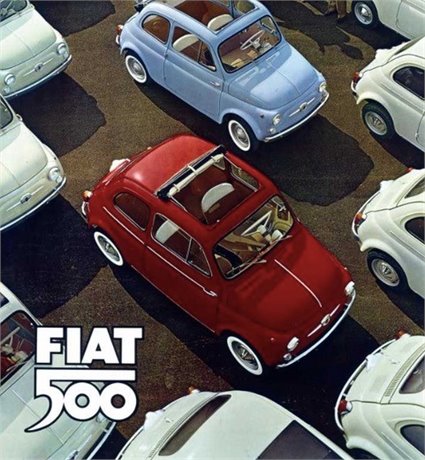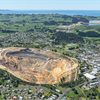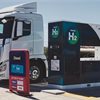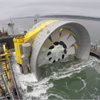MicroCar e-volution: The microcars already on our roads
23 Jun 2022
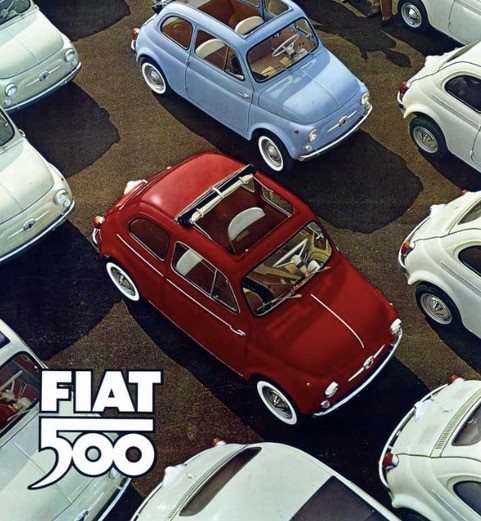
By Jeremy Rose
The Fiat 500 – better known in New Zealand as the Bambina - weighed in at just under 500 kilos but it was its 500cc engine that gave its name.
More than 5000 were assembled locally and in 1960 you could buy one for just £499
The contrast with its direct descendent, the Fiat 500 Dolcevita encapsulates the story of motorcars over the last half century. While still one of the smallest cars on the road, the Dolcevita’s 1.2 litre engine is more than twice the size of the Bambina’s. The new model is nearly double the Bambina's weight, and it’s grown in length by more than half a metre.
The Bambina’s price tag adjusted for inflation comes to just under $25k – about what you would pay for the Dolcevita.
There’s been numerous safety and performance improvements over the years but there’s one metric that has barely changed is its fuel efficiency - and therefore it’s carbon emission. The newer car manages 4.8 litres per 100km compared to 5.1 litres for the original.
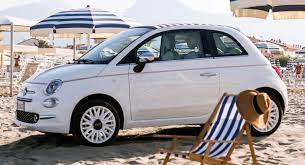
Sixty years of technological improvements have barely moved the petrol, or emissions, gauges.
The Dolcevita's 1.2 litre engine is about half that of the average car sold in New Zealand.
The number of vehicles per person trebled between the 1950s and early 2000s.
And between 1980 and 2000, total annual vehicle kilometres travelled in New Zealand more than doubled, from 18.52 billion kilometres to 37.33 billion
The number of vehicles per person in New Zealand trebled between the 1950s and early 2000s and engines have also grown in size. By 2006, the average engine size of a vehicle in New Zealand was more than 2.2 litres up from 2 litres at the beginning of the decade.
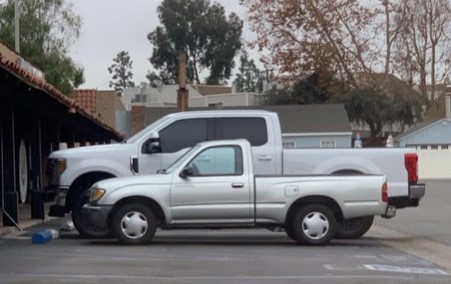
So, it would be a stretch to say the Bambina was an expression of the motoring zeitgeist of the time - it's production run coincided with the height of the yank tank phase in the US - but it offered an alternative vision that was in line with the nascent environmental movement of the 1960s and '70s.
"Any intelligent fool can make things bigger, more complex, and more violent. It takes a touch of genius—and a lot of courage—to move in the opposite direction." E.F. Schumacher wrote in Small is Beautiful, an influential.
Small is beautiful but no so much in Aotearoa
As we heard last week in Europe, China and even the US there’s a growing market for MicroEV’s some of which resemble the Bambina.
The Citroen Ami - which we featured on Friday - weighs almost exactly the same as the original Fiat 500, has a much lower top speed, a tiny fraction of its emissions,
The Ami and China's best-selling EV, the Wuling Hongguang Mini, are gaining cult followings and changing the way people think about cars.

But under current regulation neither is road legal in New Zealand.
Carbon News has asked transport minister Michael Wood whether there's likely to be any change to those regulations but we're yet to get a reply.
The small EVs already on our road

Wellington publisher Ramsey Margolis drives one of the smallest EVs you're likely to see on the road in New Zealand: The Smart Fortwo ED.
It's a second-hand import from Japan, as are most of the smallest EVs on our roads. There's only about 40 of them in New Zealand and Margolis thinks that's a missed opportunity.
The first thing Margolis wants people to know is that microEVs are not the answer. He says New Zealand should look to Norway where electrified public transport and creating walkable and cyclable cities have done more to break people's fossil fuel addictions than EVs.
But if you need to drive in a city, cars like the Smart Fortwo ED are a great option, he says.
Margolis and his wife, Despina, have had the little EV since 2019 and mainly use it for trips around Wellington central but it happily travels at the 100km/h open road speed limit when they venture out to the Kapiti Coast or Hutt Valley.
During a drive through Wellington's hilly streets, Margolis declares that the Smart car reminds him of a trolley bus - and it's true in the sense that there's that there's no obvious changing of gears just a smooth, and remarkably quiet, acceleration.
The heated seats are a nice touch yet to be found on public transport in Aotearoa.
Margolis plainly enjoys driving the car. It may look like a granny's shopping-basket but it accelerates like a boy racer's dream machine.
The Smart EV has a range of about 100 to 110 kilometres and is charged via a standard plug.
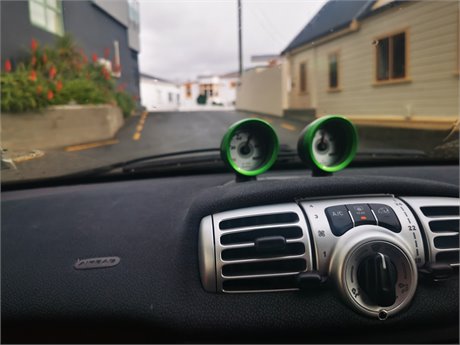
Margolis says he's learnt how to drive the car to maximise its range. It's got regenerative braking which helps. There's a cord in the car and on trip to the Kapiti Coast he tends to plug the car in before the return journey to minimise any range anxiety.
Supply outstripping demand
Viv Napier - the co-owner of Carterton's EV Cars - says demand far outstrips supply for small EVs like the Smart EV.
Japan, where virtually all our second-hand imports come from, isn't that well suited to EVs. "When you live in a second-floor apartment, hanging an electric cord out your window isn't really an option."
As a result hybrids are far more plentiful at the second-hand car auctions.
She's wary of opening the New Zealand market to true MicroEVs - like the Citroen Ami and Wuling. "We would be compromising safety standards."
That said she says there's a growing market for smaller EVs. "lt's very difficult to get your hands on the Smart EV or BMW 35is.
Co-owner and husband Martin Napier agrees. The Wuling, he says, is good for China but can't see it being popular in New Zealand where people want to be able travel on state highways at the speed limit.
He says the clean car discount has helped increase demand, but the bigger driver of mode shift is the increasing price of fuel.
And there's a growing demand for small commercial vehicles with city businesses liking them for both economic and promotional reasons, Viv Napier says.
The micro-EV already on our roads (or footpaths)
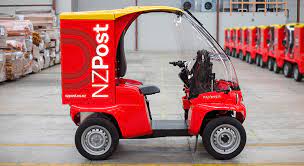
Vehicles like the Citroen Ami and the Wuling Hongguang Mini are legally what's known as quadricycle and they're not allowed on our roads.
There's one exception: The Paxter. NZ Post has about 400 of the Norwegian delivery vehicles on the road.
But NZ Post is the only organisation to date to be granted an exemption to use the Paxter.
The golf cart-like vehicle with a carrying capacity of 200 kg is used by postal and courier services around the globe and has a stop speed of 45km/h.
Earlier stories in the E-volution of the microEV series.
Citroen Ami punches above its weight
print this story

